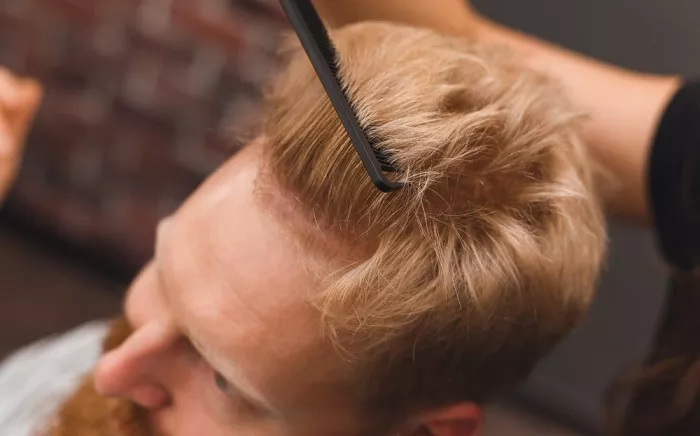Synthetic curly hair is designed to mimic the look and texture of natural curls, yet it lacks the natural oils produced by the scalp that help keep human hair smooth and moisturized. As a result, synthetic curls are more prone to dryness, friction, and ultimately, tangling. These tangles often lead to frizz, breakage, and a shorter lifespan for your extensions, wigs, or weaves.
Unlike human hair, synthetic fibers are made of plastics like Kanekalon or Toyokalon. These materials are susceptible to environmental elements such as wind, friction from clothing, or improper handling. Therefore, proper care and maintenance are not optional—they are essential.
How to Keep Synthetic Curly Hair from Tangling?
Detangling synthetic curly hair is not the same as detangling natural hair. The fibers are more fragile and should be handled delicately. Start your detangling routine by gently finger-combing the curls to remove any loose knots. Use a wide-tooth comb only after the curls have been separated by hand.
Always begin from the ends and work your way up to the roots. This method prevents unnecessary tugging that could stretch or snap the synthetic fibers. Never detangle dry synthetic hair. A light mist of water or leave-in conditioner can soften the fibers and make the process smoother.
Use the Right Tools for Gentle Detangling
The tools you use matter significantly. Wide-tooth combs, loop brushes, and your fingers are the safest options. Avoid using fine-tooth combs or hard-bristled brushes, as they can cause frizz and breakage. Loop brushes are particularly effective because their bristles glide over the fibers without snagging.
Also, keep your tools clean. A comb filled with hair and dirt can transfer residue back onto your synthetic hair, causing buildup that contributes to tangling.
The Importance of Proper Washing Techniques
Synthetic curly hair should be washed sparingly—about once every 10 to 15 wears. Frequent washing can dry out the fibers. When washing, always use lukewarm water and sulfate-free shampoo. Avoid rubbing or twisting the curls. Instead, soak the hair in soapy water for five minutes, then gently swish it around.
After rinsing, apply a small amount of conditioner or fabric softener to restore smoothness. Let the conditioner sit for 3-5 minutes before rinsing thoroughly. Do not wring or scrub the hair. Blot dry with a microfiber towel or let it air dry on a wig stand.
Drying Without Damaging the Curl Pattern
Avoid using high heat on synthetic curls. Most synthetic hair is not heat-resistant and can melt or frizz under a blow dryer. Instead, let the hair air dry naturally. Place it on a mannequin head or wig stand to maintain the shape and volume of the curls.
If you’re short on time, use a fan or place the wig in a well-ventilated area. Do not manipulate the curls while they are wet, as this can alter the curl pattern.
Storage Solutions to Prevent Tangling Overnight
Proper storage is key. Always store your synthetic curls in a breathable bag or box, away from direct sunlight and dust. Before storage, detangle the hair and apply a light leave-in spray to preserve moisture.
You can also braid the hair loosely or twist it in sections to help maintain the curl pattern and avoid friction. Avoid storing synthetic curls near rough fabrics like wool, which can cause static and tangling.
Nighttime Tips: Minimize Friction While You Sleep
If you’re wearing synthetic curly hair overnight, consider using a silk or satin bonnet. These materials reduce friction and keep the curls intact. A satin pillowcase is another excellent alternative if you don’t like wearing a bonnet.
Braiding or twisting the hair loosely before bed can also reduce morning tangles and help you maintain the style longer.
Product Selection: Less Is More
Synthetic hair doesn’t benefit from oils and serums in the same way that natural hair does. In fact, heavy products can cause buildup and attract dust. Choose lightweight, water-based sprays and conditioners designed specifically for synthetic hair.
Avoid alcohol-based products, as they can dry out the fibers. Opt for products that add shine and softness without weighing the curls down.
Protective Styling: Extend Longevity with Style
Incorporating protective styles such as braids, buns, or twists can minimize exposure to external elements and reduce the need for frequent detangling. These styles also prevent the ends from rubbing against clothes and furniture, which leads to frizz and knots.
Make sure to secure styles with soft bands or scrunchies. Avoid rubber bands, as they can snag and break the fibers.
Refresh, Don’t Re-style: Mid-Week Maintenance Tips
Instead of restyling your synthetic curls from scratch, simply refresh them. Use a light mist of water and a curl revitalizing spray to bring back the bounce and definition. Finger-style the curls gently and avoid excessive handling.
If needed, separate frizzy curls with your fingers and wrap small sections around your finger to redefine the curl pattern. Let them set naturally without heat.
When to Replace: Knowing When Enough Is Enough
Even with the best care, synthetic hair has a limited lifespan. Signs it may be time to replace include excessive frizz that can’t be tamed, unmanageable tangles, or a loss of the original curl pattern. If your styling efforts yield no results, it’s probably time for a fresh start.
Conclusion
Keeping synthetic curly hair from tangling isn’t complicated, but it does demand consistency and care. Gentle detangling, correct washing methods, proper storage, and smart product choices are your main allies. Adopt a routine and treat your synthetic curls with the same attention you would give natural hair.


